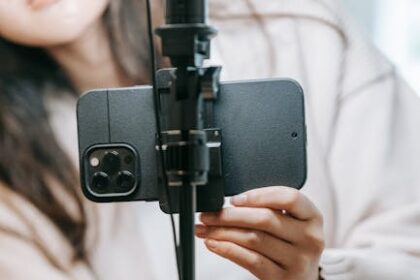The landscape of YouTube advertising is in a state of perpetual evolution, driven by advancements in artificial intelligence, shifting consumer behaviors, and an increasingly stringent global privacy framework. To truly future-proof YouTube ad strategies, marketers must move beyond reactive adjustments and embrace proactive, adaptable methodologies. This requires a deep dive into emerging trends and the implementation of sophisticated tactics that build resilience, optimize performance, and foster genuine connection with audiences in an ever-more fragmented media environment. The emphasis shifts from simply running ads to cultivating a robust, data-informed advertising ecosystem capable of navigating unforeseen changes and leveraging new opportunities as they arise.
Navigating the AI-Driven Ad Tech Revolution
Artificial intelligence and machine learning are no longer supplementary tools in advertising; they are becoming the central nervous system of modern ad tech. For YouTube advertisers, this means understanding how AI influences every stage of the campaign lifecycle, from audience segmentation to creative generation and real-time bidding. Future-proofing necessitates not just adopting AI tools but comprehending their underlying logic and limitations.
AI-Powered Audience Targeting and Segmentation:
Traditional demographic targeting is rapidly being superseded by AI-driven behavioral and psychographic segmentation. Machine learning algorithms analyze vast datasets – including viewing history, search queries, engagement patterns, and even sentiment analysis from comments – to identify hyper-relevant audience clusters with unprecedented precision. This allows advertisers to target not just who their audience is, but what their interests are, why they engage with specific content, and when they are most receptive to messages. Tools within Google Ads, powered by AI, can dynamically identify custom intent audiences, affinity audiences, and in-market segments based on real-time signals, predicting purchase intent or brand affinity far more accurately than manual methods. Future-proofing here means moving beyond static audience lists to dynamic, AI-optimized segments that constantly evolve with user behavior, ensuring ad spend reaches individuals most likely to convert.
Automated Bidding Strategies for Predictive Advantage:
Google’s automated bidding strategies (e.g., Maximize Conversions, Target CPA, Target ROAS, Maximize Conversion Value) are powerful examples of AI at work. These algorithms process millions of signals in milliseconds – device type, location, time of day, ad creative, historical performance, and even competitive intensity – to determine the optimal bid for each individual impression. The future-proof advertiser leverages these strategies not as black boxes but as sophisticated partners, providing the system with clear conversion goals and robust tracking data. The challenge lies in trust and accurate data feeding. Advertisers must ensure their conversion tracking is meticulously set up and that their conversion actions truly reflect business objectives. As AI models become more sophisticated, they will increasingly predict not just conversion likelihood but also the potential lifetime value of a customer acquired through a specific impression, leading to more intelligent LTV-based bidding.
Creative Optimization with AI Insights:
The future of ad creative is dynamic, personalized, and AI-informed. AI can analyze past ad performance to identify common elements that resonate with specific audiences – color palettes, pacing, emotional cues, call-to-action phrasing, and even the speaker’s tone. Dynamic Creative Optimization (DCO) uses AI to assemble personalized ad variations in real-time by combining different headlines, descriptions, images, and video clips based on user context and predicted preferences. For YouTube ads, this could mean AI dynamically selects the optimal video thumbnail, the opening hook, or even inserts personalized product recommendations within a shoppable ad unit. Future-proofing requires embracing A/B/n testing not just manually, but through AI-driven experimentation platforms that can rapidly iterate and learn from performance data, identifying winning creative combinations that would be impossible to discover through traditional manual testing. Advertisers must also prepare for AI-generated creative, where algorithms assist in or even fully produce ad content based on performance parameters, freeing human creatives to focus on higher-level strategic and conceptual work.
AI-Driven Budget Allocation and Performance Max:
Google’s Performance Max campaigns exemplify the convergence of AI, automation, and cross-platform reach. This campaign type uses AI to find converting customers across all of Google’s channels (YouTube, Search, Display, Discover, Gmail, Maps) from a single campaign. For YouTube advertisers, this means their video assets are now part of a broader, AI-orchestrated ecosystem. Future-proofing here is about understanding how to feed Performance Max with high-quality assets (videos, images, headlines, descriptions) and clear conversion goals. The AI then dynamically allocates budget across channels and formats to maximize conversions, often discovering new high-performing placements that a human might overlook. While it offers unprecedented automation, advertisers must learn to interpret its insights, optimize asset groups, and provide strategic direction to the AI, rather than simply setting it and forgetting it. This involves regularly reviewing asset group performance, ensuring creative diversity, and refining conversion value rules to guide the AI towards the most profitable outcomes.
Navigating the Privacy-First Advertising Era
The decline of third-party cookies, increasing privacy regulations like GDPR and CCPA, and Apple’s ATT framework signal a profound shift towards a privacy-centric internet. For YouTube advertisers, this means a reduced reliance on granular individual tracking and a greater emphasis on consent, first-party data, and privacy-preserving measurement. Future-proofing requires a fundamental re-evaluation of data collection, activation, and attribution strategies.
First-Party Data Collection and Utilization Strategies:
As third-party data diminishes, first-party data becomes paramount. This is data collected directly from your audience through interactions with your brand: website visits, email sign-ups, customer purchases, app usage, survey responses, and direct engagement on YouTube (e.g., channel subscriptions, comments). Future-proofing involves aggressively building and activating first-party data assets. This includes:
- CRM Integration: Connecting your customer relationship management (CRM) system with advertising platforms to create highly targeted audience segments (e.g., “loyal customers,” “lapsed purchasers,” “newsletter subscribers”).
- Website and App Data: Implementing robust analytics (like Google Analytics 4) to capture user behavior on your owned properties, then using this data for remarketing and lookalike modeling.
- Email List Growth: Investing in strategies to grow your email subscriber base, as email is a direct, permission-based communication channel that provides valuable first-party insights.
- Gated Content: Offering valuable content (eBooks, webinars, exclusive videos) in exchange for user information, providing explicit consent for data usage.
- Customer Surveys and Feedback: Directly asking customers for preferences and insights, which can inform audience segmentation and creative messaging.
- YouTube Channel Subscribers and Engagers: While YouTube’s direct targeting of subscribers is limited, understanding their demographics and interests can inform broader campaign strategies and content creation.
Contextual Targeting Reimagined:
In a world with less individual tracking, contextual targeting makes a powerful comeback. Instead of targeting users based on their past behavior, contextual targeting focuses on placing ads alongside content that is thematically relevant to your product or service. For YouTube, this means targeting specific channels, videos, or content categories that align with your brand’s message or your target audience’s interests. Future-proofing involves sophisticated contextual analysis, moving beyond broad categories to granular sub-topics and emerging trends. AI can play a significant role here, analyzing video transcripts, tags, comments, and even visual cues to determine the precise context and suitability for ad placement, ensuring brand safety and relevance. For example, a sports apparel brand might target specific videos about training routines or athlete interviews, rather than relying solely on user demographic data.
Privacy-Enhancing Technologies (PETs) and Data Clean Rooms:
PETs are emerging technologies designed to allow data analysis and collaboration while preserving individual privacy. These include differential privacy, homomorphic encryption, and federated learning. Data Clean Rooms (DCRs) are secure, neutral environments where multiple parties (e.g., an advertiser and a publisher) can combine their anonymized datasets for analysis without sharing raw, identifiable user data. This allows for joint insights, audience matching, and measurement while adhering to strict privacy protocols. While still relatively new for many advertisers, understanding and preparing for the adoption of DCRs and PETs is crucial for future-proof measurement and collaboration in a privacy-centric ecosystem.
Consent Management Platforms (CMPs) and User Trust:
User consent is no longer optional; it’s a legal and ethical imperative. Implementing a robust Consent Management Platform (CMP) ensures compliance with privacy regulations by clearly presenting data usage policies and obtaining explicit user consent. Future-proofing involves not just technical compliance but also building user trust. Transparency about data collection and usage, offering clear opt-out options, and demonstrating a genuine commitment to privacy can differentiate brands. On YouTube, this translates to clear communication in ad copy or landing pages about how data is used to personalize experiences, fostering a sense of trust that encourages engagement and conversions.
Measurement in a Privacy-Centric World (Aggregated Data, Modeling):
The shift away from individual-level tracking necessitates a move towards aggregated data and statistical modeling for measurement and attribution. Attribution models will rely less on deterministic, user-level paths and more on probabilistic methods.
- Conversion Modeling: Google already uses conversion modeling to account for untracked conversions due to privacy settings or cookie restrictions. This involves using machine learning to infer conversions that couldn’t be directly observed.
- Incrementality Testing: This becomes even more critical. Instead of focusing on attributing specific conversions to specific ads, incrementality testing measures the net lift in conversions that a campaign drives by comparing a test group exposed to ads with a control group that isn’t. This provides a clearer picture of true campaign value in a privacy-limited environment.
- Marketing Mix Modeling (MMM): MMM, a top-down statistical approach, analyzes historical data (ad spend, economic factors, seasonality) to determine the impact of various marketing channels on overall sales or conversions. It’s channel-agnostic and privacy-safe by design, offering a macro view of marketing effectiveness.
Adapting to Google’s Privacy Sandbox Initiatives:
Google’s Privacy Sandbox aims to create web technologies that protect privacy while still enabling online advertising. This includes APIs like Topics (for interest-based advertising), FLEDGE (for remarketing), and Attribution Reporting (for conversion measurement). YouTube advertisers, being part of the Google ecosystem, will be directly impacted by these changes. Future-proofing means staying abreast of Privacy Sandbox developments, participating in trials where feasible, and adapting measurement and targeting strategies to align with these new privacy-preserving frameworks. The goal is to evolve from relying on third-party identifiers to embracing new, aggregated, and privacy-respecting signals.
The Ascendance of Short-Form Video and Experiential Ads
YouTube Shorts, live shopping, and interactive ad formats represent a significant shift in how audiences consume video content and engage with brands. Future-proofing YouTube ad strategies means embracing these formats and designing experiences that are not just ads, but captivating moments.
Optimizing for YouTube Shorts: Best Practices and Ad Formats:
YouTube Shorts, as a direct competitor to TikTok and Instagram Reels, commands significant audience attention. Its rapid growth signals a demand for bite-sized, engaging vertical video content.
- Native Integration: Ads on Shorts must feel native to the feed, blending seamlessly with organic content. This means vertical video (9:16 aspect ratio), fast pacing, trendy audio, and a strong hook within the first few seconds.
- Concise Messaging: Get straight to the point. Shorts ads are typically 6-15 seconds long, requiring highly condensed and impactful messaging. Focus on a single strong call to action.
- Sound On: While many social videos are watched with sound off, Shorts often leverage trending audio. Design ads that work both with and without sound, but optimize for sound-on engagement where possible.
- Authenticity and Relatability: Raw, unpolished content often performs better on Shorts than highly polished, traditional commercials. User-generated content (UGC) or influencer collaborations can be highly effective.
- Call to Action: Use clear, concise on-screen text or a verbal CTA. YouTube offers swipe-up links for Shorts ads, making direct response possible.
- Performance Metrics: Monitor watch time, completion rate, and swipe-away rates specifically for Shorts ads to understand what resonates and what causes users to scroll past.
Leveraging Influencer and Creator Content for Authenticity:
The creator economy is booming, and influencers are trusted voices for their audiences. Future-proofing YouTube ads involves integrating creator content not just as sponsored posts, but as part of a broader ad strategy.
- Brand Collaborations: Partner with creators whose audience aligns with your target market. Their authentic endorsement can build trust and drive conversions more effectively than traditional ads.
- Creator-Generated Ads: Instead of just sponsoring a video, work with creators to produce ad creatives themselves. Their unique style and understanding of their audience can result in highly engaging and native-feeling ads that perform well within paid campaigns.
- Whitelisting: Running ads from an influencer’s handle (with their permission) can increase credibility and cut through ad fatigue. This allows brands to leverage the influencer’s social proof directly within their paid campaigns.
- Long-Term Partnerships: Building lasting relationships with creators fosters deeper authenticity and allows for more nuanced storytelling over time, benefiting both organic and paid efforts.
Interactive Ad Formats: Polls, Quizzes, Hotspots:
YouTube is increasingly rolling out interactive ad formats that turn passive viewing into active engagement. These formats are highly future-proof because they increase time spent with the ad, gather valuable first-party data, and create memorable brand experiences.
- Polls and Quizzes: Embed interactive questions directly into your video ads. This can be used for market research, lead qualification, or simply to increase engagement. “Which feature do you prefer?” or “What’s your biggest challenge with X?”
- Hotspots/Clickable Elements: Add clickable overlays to video ads that reveal more information, link to specific product pages, or trigger a different video segment. This allows users to control their information journey.
- Branching Storylines: While more complex, future YouTube ads could potentially offer viewers choices within the ad, leading to different narrative paths based on their selections, offering a truly personalized ad experience.
- Call to Action Overlays: Simple but effective, these overlays are persistent throughout the ad, providing a clear pathway for conversion without interrupting the video flow.
Augmented Reality (AR) and Virtual Reality (VR) in Ads (Future Vision):
While still nascent for mainstream YouTube advertising, AR and VR are critical to consider for long-term future-proofing, especially as metaverse concepts gain traction.
- AR Filters/Lenses: Imagine an AR ad where users can “try on” makeup, clothing, or furniture virtually within the YouTube app using their phone’s camera. Brands like MAC Cosmetics have experimented with AR try-on experiences.
- Immersive VR Experiences: For brands selling complex products or experiences (travel, real estate, automotive), VR ads could offer immersive tours or demonstrations, providing a level of detail and engagement impossible with traditional video.
- Interactive Product Showcases: Users could manipulate 3D models of products directly within an ad, exploring features from every angle.
As AR/VR adoption increases, particularly through devices like smart glasses, YouTube ads will undoubtedly evolve to offer these deeply experiential opportunities, moving beyond passive viewing to active participation.
Live Shopping and Shoppable Video Experiences:
Live shopping events, popularized in Asia, are gaining traction globally, and YouTube is a natural fit for this convergence of entertainment and commerce. Shoppable video integrates product discovery and purchase directly into the video content.
- Live Streams with Product Tags: Brands can host live stream events on YouTube showcasing products, with viewers able to click on integrated product tags to purchase items in real-time without leaving the stream.
- Video Action Campaigns (VACs): Google Ads already offers VACs that integrate product feeds and calls to action directly within video ads, making them inherently shoppable. Future-proofing involves optimizing these campaigns with high-quality product imagery, competitive pricing, and compelling video content that highlights product benefits.
- Interactive Overlays for Product Catalogs: Imagine an ad for a fashion brand where viewers can click on different outfits worn by models in the video, instantly seeing product details and adding to cart.
- Personalized Product Recommendations: Leveraging AI, shoppable ads could dynamically display products most relevant to individual viewers based on their viewing history, past purchases, or stated preferences, mirroring the experience of an in-store sales assistant.
Integrating Ads into Long-Form Content (Brand Integrations):
Beyond traditional pre-roll, mid-roll, and bumper ads, future-proofing includes exploring deeper brand integrations within long-form YouTube content.
- Sponsorships and Branded Content: This involves working with creators to naturally weave your brand or product into their regular content, blurring the line between ad and entertainment. This requires careful consideration of brand fit and audience alignment.
- Product Placements: Subtle or overt placement of products within creator videos, often combined with a verbal mention or call to action.
- Custom Ad Experiences: Developing bespoke ad formats that are tailored to specific content series or channels, creating a unique and less intrusive ad experience for the viewer. This is more about partnerships than programmatic buys.
These integrations build deeper brand affinity because they are less disruptive and often perceived as more authentic by the audience, providing a powerful long-term future-proofing strategy for brand building.
Advanced Measurement, Attribution, and ROI Optimization
The future of YouTube ads demands sophisticated measurement strategies that move beyond last-click attribution, embrace incrementality, and align with broader business objectives. The goal is to prove true return on investment (ROI) in a complex, multi-touch, and privacy-constrained environment.
Moving Beyond Last-Click Attribution: Multi-Touch Models:
Last-click attribution, which attributes 100% of the conversion credit to the final ad interaction, is fundamentally flawed for video advertising. YouTube ads often serve as a top-of-funnel awareness or consideration touchpoint, influencing later conversions that might be credited to search or direct traffic. Future-proofing necessitates adopting multi-touch attribution models:
- Linear: Equal credit to all touchpoints in the conversion path.
- Time Decay: More credit to touchpoints closer to the conversion.
- Position-Based: More credit to the first and last touchpoints, with remaining credit distributed among middle interactions.
- Data-Driven Attribution (DDA): Google’s DDA model uses machine learning to assign fractional credit to each touchpoint based on its actual contribution to conversions. This is the most sophisticated and recommended model for future-proofing, as it adapts to real-world user journeys. It provides a more accurate picture of YouTube’s influence on the entire conversion funnel. Implementing DDA requires sufficient conversion data, but it offers unparalleled insights into the true value of video ad impressions.
Incrementality Testing and Holdout Groups:
As privacy measures limit individual tracking, incrementality testing becomes paramount. Instead of trying to attribute every conversion, incrementality measures the causal impact of your YouTube ad campaigns. This involves:
- Test and Control Groups: Dividing a population into a test group exposed to your YouTube ads and a statistically similar control group that is not.
- Measuring Lift: Observing the difference in key performance indicators (KPIs) like conversions, sales, or website visits between the two groups. The difference represents the incremental lift attributable to your YouTube ads.
- Geographic Holdouts: Running campaigns in certain regions while holding out others, then comparing performance.
- Audience Holdouts: Randomly withholding ads from a small segment of your target audience.
Incrementality testing provides undeniable evidence of ad effectiveness, demonstrating the true ROI of your YouTube ad spend, even in scenarios where direct attribution is challenging. It helps answer the fundamental question: “Would these conversions have happened without my YouTube ads?”
Lifetime Value (LTV) and Customer Acquisition Cost (CAC) Analysis:
Future-proofing measurement means shifting focus from immediate conversion volume to long-term customer value.
- Customer Acquisition Cost (CAC): Calculate the total cost of acquiring a new customer through your YouTube ad efforts. This involves dividing total ad spend by the number of new customers acquired.
- Lifetime Value (LTV): Predict the total revenue a customer is expected to generate over their relationship with your brand.
- LTV:CAC Ratio: This crucial metric reveals the profitability of your customer acquisition efforts. A healthy ratio (e.g., 3:1 or higher) indicates sustainable growth. For YouTube ads, this means optimizing campaigns not just for low CPA, but for acquiring high-LTV customers. This requires integrating your ad platform data with CRM and sales data to track customer behavior beyond the initial conversion. For example, a YouTube ad campaign might have a higher initial CPA, but if it consistently brings in customers with significantly higher LTV, it’s a more valuable campaign in the long run.
Unified Marketing Measurement (UMM) and Marketing Mix Modeling (MMM):
In a multi-channel world, isolating the impact of YouTube ads in a silo is insufficient. UMM and MMM offer holistic views of marketing performance.
- Unified Marketing Measurement (UMM): Combines various data sources (digital ad platforms, traditional media, sales, economic data) into a single measurement framework. It uses advanced analytics and machine learning to understand the interplay and synergy between different channels, including YouTube.
- Marketing Mix Modeling (MMM): A top-down approach that uses historical aggregate data to determine the impact of different marketing channels on overall business outcomes (sales, brand awareness). Unlike attribution models that track individual user journeys, MMM looks at the collective effect of marketing spend over time. It is privacy-safe and excellent for strategic budget allocation across channels, including determining the optimal share of voice for YouTube. Future-proofing involves investing in MMM capabilities to make macro-level budget decisions and understand YouTube’s strategic role within the broader marketing mix.
Cross-Platform Measurement Challenges and Solutions:
Users move seamlessly between devices (mobile, desktop, CTV) and platforms. Measuring YouTube ad effectiveness across these diverse environments presents challenges.
- Google Analytics 4 (GA4): Designed for cross-platform measurement, GA4 uses an event-based data model and a machine learning-powered identity graph to stitch together user journeys across devices and platforms. It is fundamental for future-proofing measurement, providing a more comprehensive view of how users interact with your brand after seeing a YouTube ad, whether it’s on your website, app, or another property.
- Data Lakes and Warehousing: Consolidating data from all marketing platforms (Google Ads, Facebook Ads, CRM, website analytics, etc.) into a central data lake or warehouse provides a single source of truth for analysis.
- Customer Data Platforms (CDPs): CDPs unify customer data from various sources into a single, comprehensive profile, enabling a 360-degree view of the customer journey and powering more sophisticated cross-platform targeting and measurement.
Leveraging Google Analytics 4 (GA4) for Deeper YouTube Insights:
GA4 is a cornerstone for future-proof YouTube ad measurement.
- Event-Based Model: Everything is an event, offering flexibility to track any interaction. This allows for granular tracking of video plays, specific calls to action within YouTube ads, and subsequent on-site behavior.
- Enhanced Measurement: Automatically tracks common user interactions (scrolls, outbound clicks, video engagement) without manual setup.
- Predictive Capabilities: Uses machine learning to predict churn probability, purchase probability, and revenue potential, allowing advertisers to identify high-value segments and optimize YouTube ad spend accordingly.
- BigQuery Integration: Free integration with BigQuery for enterprise users allows for complex, custom analysis of raw event data, providing unparalleled flexibility for deep dives into YouTube ad performance and user behavior.
- Explorations: GA4’s “Explorations” feature allows for ad-hoc reporting and advanced analysis, including funnel exploration, path exploration, and segment overlap, which can illuminate how YouTube ads contribute to overall user journeys and conversions.
The Role of Data Visualization and Dashboards:
Raw data is overwhelming. Future-proofing involves transforming complex data into actionable insights through effective data visualization.
- Custom Dashboards: Build dashboards (using tools like Google Data Studio/Looker Studio, Tableau, Power BI) that pull data from Google Ads, GA4, and other sources. These dashboards should be tailored to specific business objectives and KPIs, providing at-a-glance performance insights for YouTube ads.
- Automated Reporting: Automate report generation to save time and ensure stakeholders have access to up-to-date performance metrics.
- Focus on Actionable Insights: Dashboards should not just display data but highlight trends, anomalies, and opportunities for optimization. For example, identifying specific YouTube creative types that drive higher LTV, or understanding which audience segments are most receptive to a certain ad format.
Forecasting and Scenario Planning for Ad Spend:
Predicting future performance is crucial for strategic planning.
- AI-Powered Forecasting: Leverage AI tools within platforms like Google Ads or third-party solutions to forecast conversions, clicks, and costs based on historical data, seasonality, and market trends.
- Scenario Planning: Model different budget allocations and campaign strategies to understand their potential impact on key outcomes. “What if we increase YouTube ad spend by 20%? What if CPA increases by 10% due to competition?” This helps prepare for different market conditions and optimize budget allocation proactively.
- Recession Planning: Future-proofing includes having contingency plans for economic downturns or unexpected market shifts, knowing which YouTube campaigns to scale up or down based on their proven incremental value and LTV contribution.
Defining and Tracking Future-Proof KPIs:
Move beyond vanity metrics to KPIs that truly reflect business growth and resilience.
- Brand Lift: Measuring the incremental impact of YouTube ads on brand awareness, ad recall, and consideration. This is especially critical for top-of-funnel video campaigns.
- Incremental Sales/Conversions: Focusing on the net additional conversions driven by YouTube ads (as determined by incrementality testing).
- Customer Lifetime Value (LTV): Prioritizing campaigns that acquire high-value, long-term customers.
- LTV:CAC Ratio: The ultimate profitability metric for acquisition.
- Return on Ad Spend (ROAS) and Return on Investment (ROI): Ensuring that every dollar spent on YouTube ads generates a profitable return. This includes not just direct revenue but also indirect benefits like brand equity.
- Engagement Rate (for brand building): Beyond clicks, monitor engagement metrics like watch time, view-through rate, shares, and comments, especially for longer-form or brand-focused content.
- First-Party Data Growth: Tracking the growth and quality of your owned audience data captured via YouTube ads and landing pages.
Continuous Learning and Skill Development in Ad Tech:
The most future-proof asset for any advertiser is a commitment to continuous learning. The YouTube ad ecosystem is dynamic, with new features, algorithms, and privacy regulations emerging constantly.
- Stay Informed: Regularly consume industry news, research papers, Google’s official announcements, and participate in ad tech conferences.
- Experimentation Mindset: Cultivate a culture of continuous A/B testing, hypothesis testing, and learning from failures. The future-proof advertiser is not afraid to try new formats, bidding strategies, or targeting methods.
- Data Literacy: Develop strong data analysis skills, understanding how to interpret complex data from GA4, Google Ads, and other sources to derive actionable insights.
- AI Literacy: While not requiring deep coding knowledge, understanding the capabilities and limitations of AI and machine learning in ad tech is critical for effective strategy and optimization.
- Ethical Considerations: Staying abreast of privacy best practices, ethical AI usage, and brand safety guidelines is non-negotiable for building trust and ensuring long-term sustainability.
- Cross-Functional Collaboration: Work closely with data scientists, developers, creative teams, and sales teams to ensure a unified approach to measurement, data collection, and campaign execution.
Future-proofing YouTube ads is not a one-time task but an ongoing strategic imperative. It requires embracing technological advancements like AI, proactively adapting to privacy shifts, innovating with new ad formats, and adopting sophisticated measurement methodologies. The successful YouTube advertiser of tomorrow will be agile, data-driven, customer-centric, and committed to continuous learning, building campaigns that are not just effective today, but resilient and adaptable for whatever the future of digital advertising holds.











